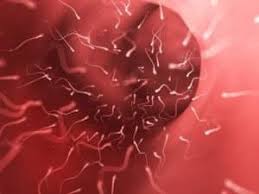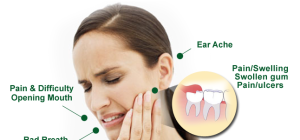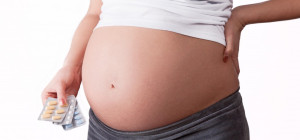 An infection causes localized inflammation in the human body, which follows by redness, itching or flaking of the skins etc. Among all microbial infections, yeast infections are spectacularly notorious for being contagious and for giving the patient a tough time to get rid of it. For last two decades, emergence and easy availability of antibiotics have reached a stage, where these ‘prescription’ medicines are being availed by anyone without any expert consultation. Consumption of the same whenever and however possible is creating multi-drug resistance (MDR). MDR is a situation, where pathogens are not any more susceptible to our antibiotics, because they have evolved with resistance. In these cases, infections are hard to cure. So, let us take a look at the type of yeast infections and causative agents.
An infection causes localized inflammation in the human body, which follows by redness, itching or flaking of the skins etc. Among all microbial infections, yeast infections are spectacularly notorious for being contagious and for giving the patient a tough time to get rid of it. For last two decades, emergence and easy availability of antibiotics have reached a stage, where these ‘prescription’ medicines are being availed by anyone without any expert consultation. Consumption of the same whenever and however possible is creating multi-drug resistance (MDR). MDR is a situation, where pathogens are not any more susceptible to our antibiotics, because they have evolved with resistance. In these cases, infections are hard to cure. So, let us take a look at the type of yeast infections and causative agents.
What causes yeast infections?
Yeast is a type of fungus, which stays and grows in almost everything. Even inside our body, we do have yeast colonies, mostly in the gut. But the yeast we have within us, are either ‘good’ flora or ‘bad’ flora kept at bay by our immune system. So, whenever our immune system is weak, these opportunistic yeasts outgrows and creates an infection. The scientific world knows yeast as Candida. There are over 150 species of yeast. But most common infection causing 6 species are as follows:
- Candida Albicans – causes over 50% of the counted cases of yeast infection. If not treated properly, creates systemic infection in our bloodstream.
- Candida Tropicalis – overgrowth of this species causes problems in the gastrointestinal tract, in the nervous system and also creates a vaginal
- Candida Glabrata – causes systemic infection in mouth, lungs and respiratory tract. Overgrowth of this species causes Thrush, which is contagious and can affect any age group of people.
- Candida Parapsilosis – causes chronic syndromes like flu, systemic infection in nails and toe, chronic fatigue etc.
- Candida Krusei – This species rarely causes any discomfort, but while does, it causes diarrhea in infants.
- Candida Lusitaniae – Another rare fungal species causing kidney damage and systemic blood infection.
Symptoms: Common symptoms of yeast infection at very initial stage might not be visible. But with the overgrowth or colonization, localized infections start creating discomfort. White patches at different parts of the body including mouth, toe, nails, ankle region are the major first sights of a possible candida infection. Vaginal yeast infection is an imminent threat which requires being addressed immediately by a medical practitioner to stop overgrowth in the uterus and other body parts. Besides all these, bloating, excessive gas production, indigestion is a few signs of yeast infection.
Treatments: Treating a yeast infection is not similar to treating fever. While prescription antibiotics are able to control most infections, natural remedies are also powerful treatments for yeast infection. Here we will talk about some effective home remedies to keep yeast overgrowth at bay.
- Apple cider vinegar: ACV is one wonderful natural agent used in hair loss or in treating yeast infection because of its anti-microbial effects. Soak a towel in water mixed with ACV and apply gently to infections twice a day. It will work like a magic.
- Garlic: Not only usefulness in cooking but the anti-microbial activity of garlic is well-known for This natural herb exerts its effect on candida very quickly and effectively. Garlic can be used to treat candida infection both intrinsically and extrinsically. Add a clove of garlic in your regular meal. Also, make a paste of garlic in water and apply to the infected area to stop yeast growth.
- Boric acid: Usage of boric acid to treat yeast infection is often suggested by doctors. Boric acid is a strong antifungal and antiviral agent. To treat vaginal infection or in inner thighs, boric acid is very handy. Dissolve a teaspoon of boric acid in 30ml of clean water and wash the area with it.
- Tea tree oil: This organic oil has effective anti-microbial characteristics. For the last decade, naturotherapists are using tea tree oil to cure any type of inflamed skin. Mix it with honey or water and apply it to the infected area regularly to get rid of yeast infections.
- Yogurt: Plain yogurt works like charm on yeast colonies both internally and externally. The Lactobacillus bacteria in yogurt control the growth of Candida Add a scoop of yogurt to your daily meals. Also, you can apply yogurt directly to the infected area to kill yeast colonies.
- Epsom salt: Epsom salt is the commercial name of the crystals of magnesium sulfate. This salt has anti-fungal effects and thus adding it to water and wash infected are with it can help reduce the yeast growth.
- Oregano oil: Home remedies always used natural oil extracts which exerts anti-microbial effects. Oregano oil has phenolic compounds, which are effective against yeast infections. Applying this to the infected are thrice a day can be very useful to treat candida infection.







